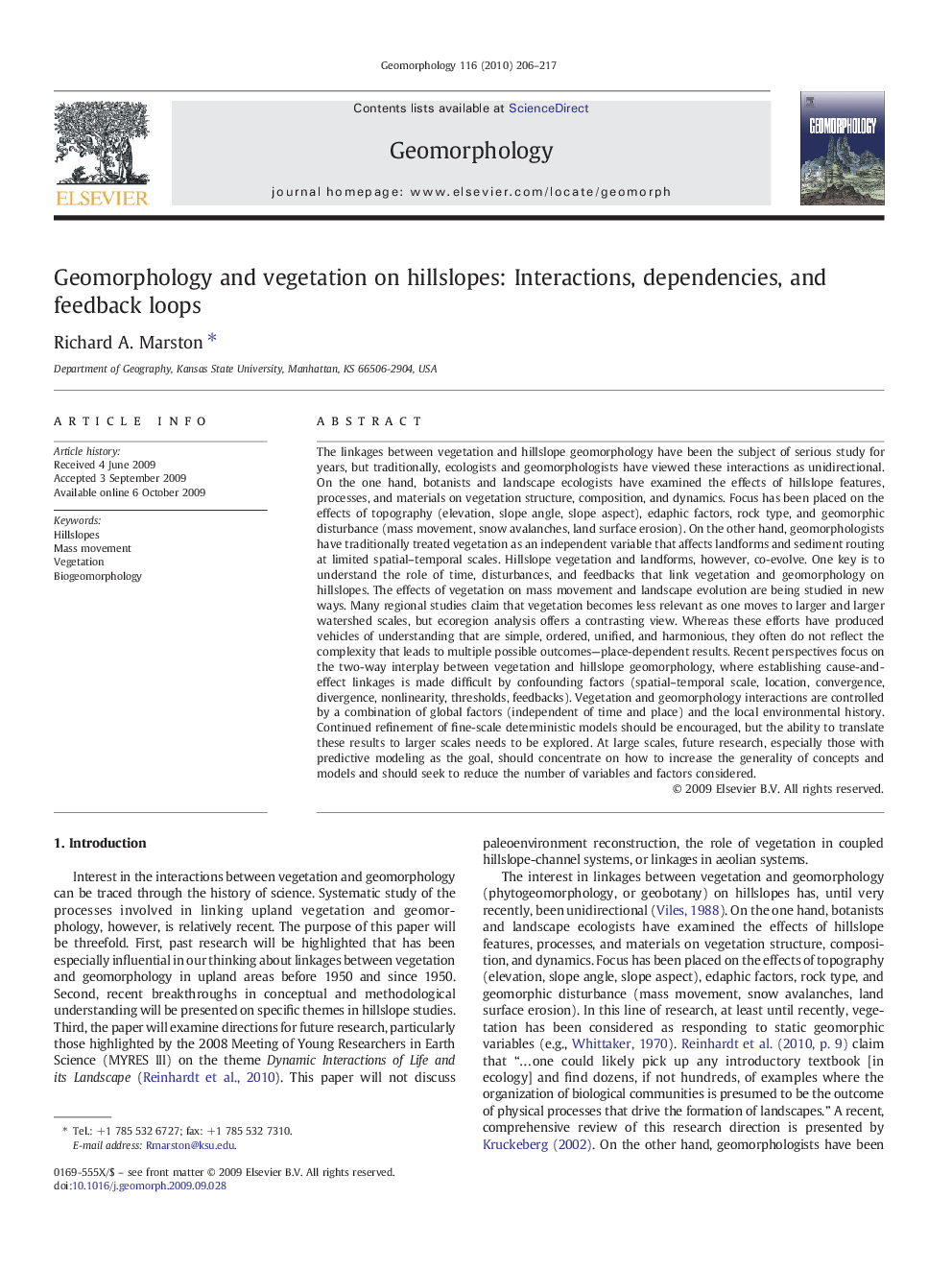| کد مقاله | کد نشریه | سال انتشار | مقاله انگلیسی | نسخه تمام متن |
|---|---|---|---|---|
| 4686009 | 1635526 | 2010 | 12 صفحه PDF | دانلود رایگان |

The linkages between vegetation and hillslope geomorphology have been the subject of serious study for years, but traditionally, ecologists and geomorphologists have viewed these interactions as unidirectional. On the one hand, botanists and landscape ecologists have examined the effects of hillslope features, processes, and materials on vegetation structure, composition, and dynamics. Focus has been placed on the effects of topography (elevation, slope angle, slope aspect), edaphic factors, rock type, and geomorphic disturbance (mass movement, snow avalanches, land surface erosion). On the other hand, geomorphologists have traditionally treated vegetation as an independent variable that affects landforms and sediment routing at limited spatial–temporal scales. Hillslope vegetation and landforms, however, co-evolve. One key is to understand the role of time, disturbances, and feedbacks that link vegetation and geomorphology on hillslopes. The effects of vegetation on mass movement and landscape evolution are being studied in new ways. Many regional studies claim that vegetation becomes less relevant as one moves to larger and larger watershed scales, but ecoregion analysis offers a contrasting view. Whereas these efforts have produced vehicles of understanding that are simple, ordered, unified, and harmonious, they often do not reflect the complexity that leads to multiple possible outcomes—place-dependent results. Recent perspectives focus on the two-way interplay between vegetation and hillslope geomorphology, where establishing cause-and-effect linkages is made difficult by confounding factors (spatial–temporal scale, location, convergence, divergence, nonlinearity, thresholds, feedbacks). Vegetation and geomorphology interactions are controlled by a combination of global factors (independent of time and place) and the local environmental history. Continued refinement of fine-scale deterministic models should be encouraged, but the ability to translate these results to larger scales needs to be explored. At large scales, future research, especially those with predictive modeling as the goal, should concentrate on how to increase the generality of concepts and models and should seek to reduce the number of variables and factors considered.
Journal: Geomorphology - Volume 116, Issues 3–4, 1 April 2010, Pages 206–217